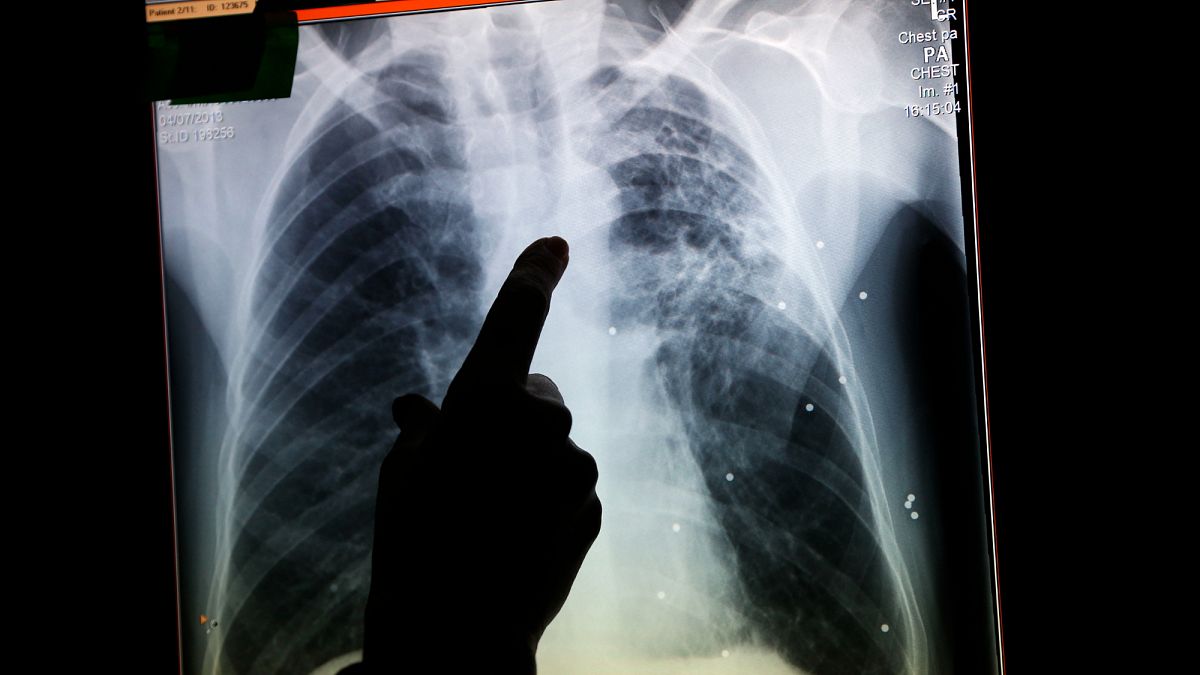Anja Madhvani was already sick when she ran out of water in the middle of the desert. She’d travelled from the United Kingdom to run an ultramarathon in Morocco in 2018, but couldn’t seem to keep enough food down. Camping in the evenings, she was feverish.
When she coughed, blood came up. Then the hallucinations started. “I was on my own in this expanse of baked earth,” Madhvani, now 35, told Euronews Health.

“And I just had this physical feeling that I was dying”. When she finally finished the race and made it back to the UK, doctors told her she had the flu, then a chest infection. X-rays and phlegm testing later confirmed Madhvani actually had tuberculosis (TB) – making her one of about 6.
9 million people worldwide to be diagnosed that year. It took Madhvani 11 days in a hospital isolation unit and nearly a year of daily pills to recover from the disease, and another year to feel like herself again. “Progress was so slow,” said Madhvani, an event manager in Leeds.
“I had been walking around for quite a while with this deadly thing inside of me, and I had no idea...
Some of those things still linger a little bit”. TB is often thought of as a relic of the 19th century, when “consumption” was believed to be responsible for a quarter of all deaths in the UK. But it remains the world’s deadliest infectious disease, killing an estimated in 2023.
TB mostly affects countries in Southeast Asia, Africa, and the Western Pacific, and it is often called a “social disease” because of its close links to poverty. After a downturn during the COVID-19 pandemic, wealthy countries like the UK are now seeing a resurgence of TB that experts say is the canary in the coal mine for other health issues related to social deprivation – everything from other infectious diseases to chronic conditions like diabetes. “Because TB is the archetypal disease of poverty.
.. it really is a sentinel for other conditions,” Dr Tom Wingfield, an infectious disease doctor and deputy director of the Liverpool School of Tropical Medicine’s Centre for TB Research, told Euronews Health.
England reported 5,480 TB cases last year, from 2023 on top of an 11 per cent increase the year before – the biggest annual jump since It’s now common enough that a clinic in East London, which has more new TB cases than anywhere else in Western Europe, is opening a £4.63 million (€5.55 million) .
It treated 294 patients last year. TB is caused by a bacteria that can lie dormant in the lungs for decades before attacking the rest of the body, notably the spine and brain. The only vaccine currently available helps prevent the disease among young children, but is for adults.
Most new cases in England have been among immigrants who may have been infected years before their arrival. But for the second year in a row, TB cases are also on the rise in England among those born in the UK after they’d fallen every year since 2012. Infections are also up in Scotland, Wales, and Northern Ireland.
The uptick in cases is likely due in part to disruptions in medical care during the COVID-19 pandemic, meaning a backlog of TB infections is only now being detected. It’s a big enough increase that these delays are likely only part of the story. TB risks are higher among people who are homeless, living in crowded settings, currently or formerly imprisoned, have a history of drug or alcohol misuse, or are grappling with undernutrition.
As of late 2024, just 13.1 per cent of England’s TB patients aged 15 or older reported at least one social risk factor – but with data missing, it’s likely an undercount. “We know pretty well from the figures where the rises are coming from.
The why is still a bit of a mystery,” Paul Sommerfield, executive trustee of TB Alert, a non-profit focused on TB in the UK and India, told Euronews Health. Earlier this month, the UK Health Security Agency (UKHSA) asked experts to weigh in on an updated 5-year action plan to better prevent, detect, and control TB in England. The current plan aimed to curb delays in diagnosis like the one Madhvani faced, have most patients finish their treatment, do more testing for TB, and ensure health workers can spot the signs of TB.
But it’s still unclear whether enough money will be attached to the new plan, particularly for efforts to raise awareness in high-risk communities about symptoms and how to access medical care, Sommerfield said. The UKHSA declined to answer questions about the new plan’s priorities or budget. In a statement issued to Euronews Health, Dr Esther Robinson, head of the agency’s TB unit, called the disease a “serious public health issue” and urged people to get tested if they have symptoms, including a persistent, mucus-ridden cough.
Wingfield has some ideas for the plan. He wants more screenings for new immigrants at risk of TB, given few eligible people are actually tested, and suggested that employers who recruit from overseas could help fund the programme. He also wants the government to collect more information on TB patients’ social and financial problems, so they can be connected to housing, food banks, and other services.
Many TB doctors in the UK “have given money from out of their pocket to somebody that they've looked after to get food, to pay for a bus...
or because they're just in a dire situation,” Wingfield said. Meanwhile, Madhvani pointed to gaps in mental health support for TB patients, particularly once they wrap up treatment. “I don't think that the system understands how frightening it is and how lonely it is, especially when you finish treatment and then you're just spat out into the world.
There’s no more follow-up,” she said. One bright spot is that few UK patients have forms of TB that are resistant to drugs, which can make it harder and more expensive to treat. Drug resistance poses a bigger problem in countries where people struggle to access medical care or stop treatment early.
The drugs cause sometimes painful side effects, and people are supposed to take them every day for four to nine months. “We have a fairly good system for dealing with TB, but it's a matter of finding people soon enough to treat them properly,” Sommerfield said. Some people who are infected with TB never go on to develop the disease.
But rooting out infections early is critical for patients like Madhvani. She doesn’t know how she got TB. But before her diagnosis, she unknowingly infected her partner, friends, family members, and colleagues.
Most didn’t go on to develop the disease, but her mother did, and she is still struggling with health complications seven years later. Another person Madhvani infected had latent TB, but no disease yet. Doctors put him on medication to stave off illness, but he stopped taking it early.
Years later, “he sent me a photo of him in hospital, emaciated...
and he looked more unwell than I ever was,” Madhvani said. Her gut reaction was anger that he hadn’t taken TB seriously enough. “I don't think people understand what it will do to you if you don't get it sorted,” she said.
“It doesn't matter how wealthy you are, whether you've travelled or not travelled. If you come into contact with it, you're at risk”..
Health

Why is tuberculosis, the world's deadliest infectious disease, on the rise in the UK?

Tuberculosis (TB) cases rose 13 per cent in England last year, with increases among both immigrants and people born in the UK.












.jpg?auto=webp&crop=3%3A2&width=1200)

